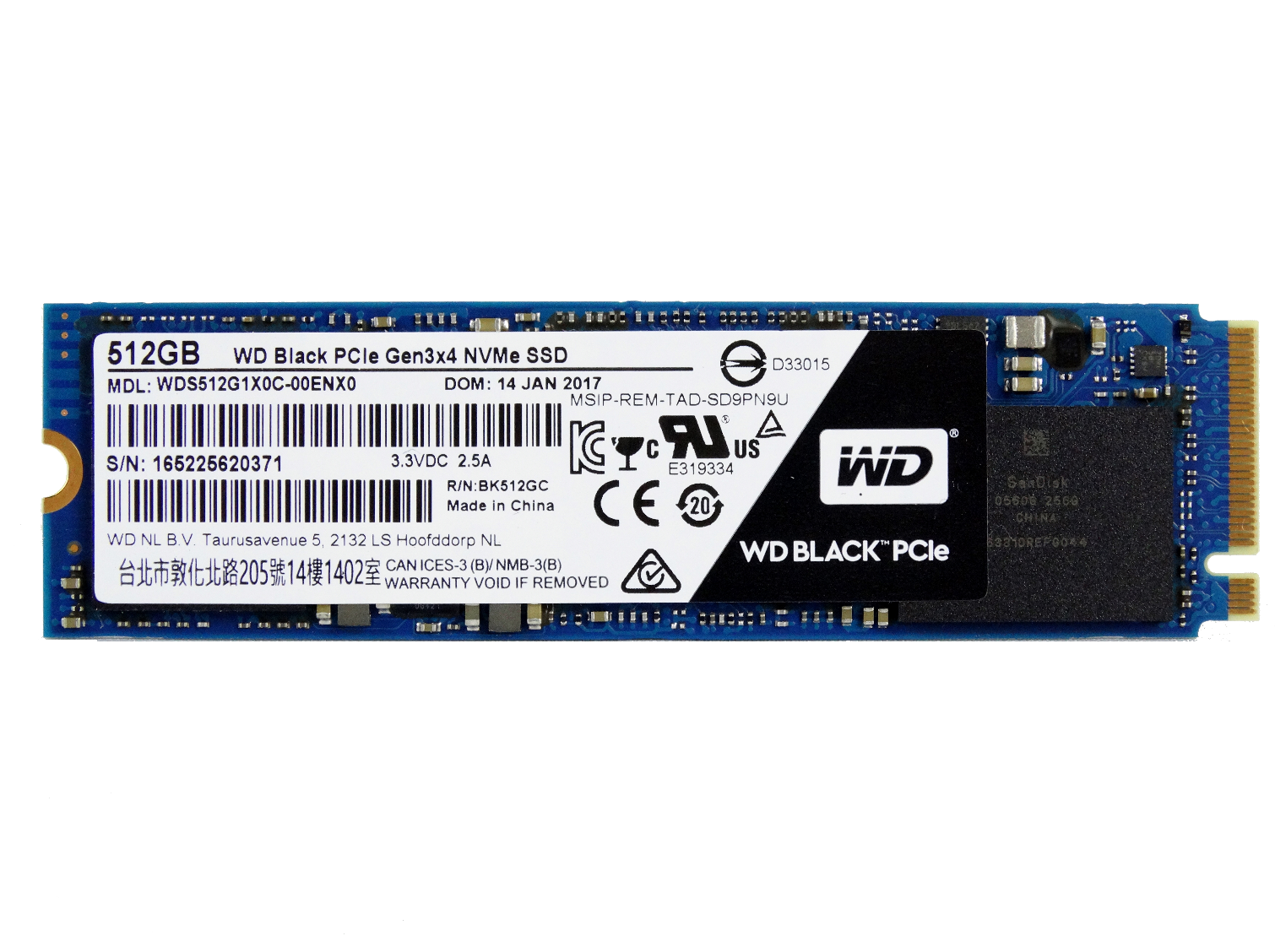WD Black PCIe 512GB SSD Review
Why you can trust Tom's Hardware
Conclusion
Western Digital has only released a handful of consumer SSDs, so we have limited historical data. All of WD's SSDs came from its acquisitions of other companies. The Green, Blue, and Black SSDs come from the SanDisk team. None of the three previously released models have been a success story with our readers, but the Black PCIe is the first to break NVMe ground, so WD branded it as a high-performance product.
The Black PCIe is not the high-performance product we expected. Instead of diving in with a drive designed to compete with the Samsung 960 Series, WD went for the low hanging fruit and targeted the Intel 600p and other entry-level NVMe SSDs. The Black PCIe is only a "high-performance" SSD compared to other WD products. WD apparently didn't take the rest of the industry into account during the branding process.
SanDisk and WD are convinced that TLC flash is the future of consumer SSDs. Maybe it's because the analysts keep telling us that, or maybe it's simply wishful thinking. There is certainly a tide pushing the market to TLC, but users have never asked for neutered high-performance products with an extra bit that disables the high-performance gene in the SSD DNA. The TLC mutation, at least without 3D NAND technology to improve performance and endurance, is more of a cancer than a cure. To think otherwise is shortsighted.
With a stubborn unwillingness to utilize MLC flash in consumer products, and an inability to deliver 3D in a cost-effective manner, Western Digital only has marketing spin and pricing to fall back on. In time, the company will deliver BiCS 3D at a competitive price point, but it will be the last of the NAND flash fabs to do it in meaningful quantities.
Planar TLC NVMe SSDs may have made sense when SanDisk designed and set the Black in motion, but times change quickly. At this stage, without 3D NAND, TLC NVMe SSDs are like flea market knockoffs. They have the right labels (NVMe and PCI Express logo), but just because the arm has an "O," it doesn't mean they are real Oakley’s.
The MyDigitalSSD BPX is the wrench in the gears because it uses MLC flash and actually retails for less than the Black PCIe. In a 600p/Black-only world, the Black looks good, but it still has lower endurance and a higher price than the 600p 3D TLC SSD. It may simply be too soon for products like these--MLC isn't dead just yet.
Notebooks are the one area where the WD Black PCIe outshines all other low-cost NVMe products. The drive delivers superior battery life compared to the low-cost NVMe TLC competition. Business users that require eDrive or TGC encryption are still left in the cold with older SSDs like the Samsung 950 Pro or M.2 SATA products.
Get Tom's Hardware's best news and in-depth reviews, straight to your inbox.
There were a number of paths available for Western Digital to make the Black PCIe a much better product, but the path it chose was like a slot car track--follow the leader and don't deviate. WD's Black will sell based on brand and name recognition, but there are other options available.
MORE: Best SSDs
MORE: How We Test HDDs And SSDs
MORE: All SSD Content

Chris Ramseyer was a senior contributing editor for Tom's Hardware. He tested and reviewed consumer storage.
-
lun471k I was all hyped up when I saw the article title. Each line I read and graph shown just killed the feeling. Looks like WD's far behind everyone else. I was hoping they'd at least be in the mid range, especially considering the branding of the black series.Reply -
sillynilly Agree LUN - I was a WD fanboy in the HDD days and wanted to see similar performance from the black lineup. Looks like crap on a cracker instead. Too bad.Reply -
velocityg4 Looking at current pricing. There is nothing remarkable about it. It is priced around the similar performing Intel 600p and MyDigitalSSD BPX. Looking at real world uses. For the average user, gamer, workstation user, &c you won't notice the difference. So get whichever NVMe option is the cheapest.Reply
If you are running a server, multiple VMs or some special workstation functions. Then performance will matter. -
ubercake Seems like getting SanDisk on board would yield more competitive results. Maybe WD still insists on being the boss even though they are late to the game?Reply -
Stevemeister "Seems like getting SanDisk on board would yield more competitive results". This reminds me of when Daimler-Benz hitched itself to Chrysler . . . it didn't raise the standards at Chrysler rather it started to sink DB. This looks like another case of a smaller high performance brand being dragged down into mediocrity (or worse) by a much larger but technically obsolete Behemoth.Reply -
gasaraki I got the MyDigitalSSD BPX and it's really fast in everyday use. Why get this when the BPX is cheaper, faster and has better endurance?Reply -
takeshi7 In the Random Write Performance chart you seem to have switched the MyDigitalSSD BPX with the WD Black. In the first graph it shows the BPX getting around 150K IOPS and the Black ~98K IOPS, but the second graph shows the BPX with ~98K IOPS and the Black with ~150K IOPS.Reply -
hpram99 Looking at the chart, that's about 10ms at 800MB/s that means the cache is 8MBReply
Really? This is false advertising that the drive is 800MB/s for 0.001% of the drive
